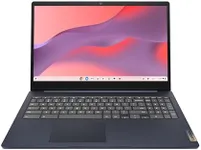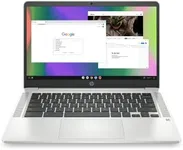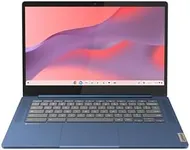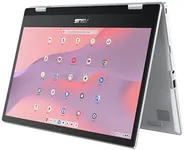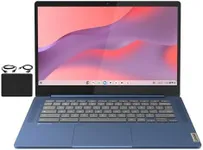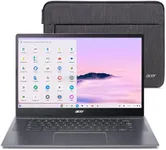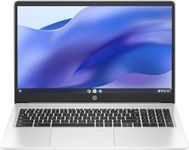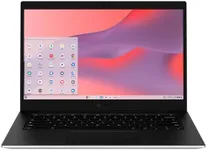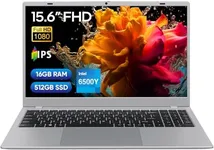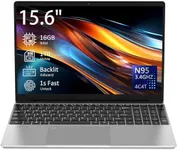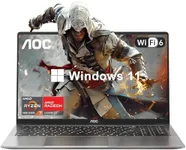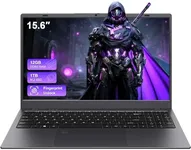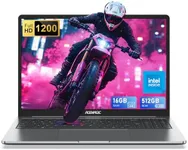Buying Guide for the Best Chromebooks
Choosing a Chromebook is all about knowing what you need it for and matching those needs to the device’s capabilities. Chromebooks are lightweight laptops that run on Google's Chrome OS and are designed mostly for internet-based activities like browsing, working on documents, watching videos, and using web apps. To find the right model, you’ll want to look at a few important features that directly affect how well the Chromebook will suit your daily tasks. It’s less about advanced specifications and more about balancing performance, portability, and comfort based on the tasks you expect to do most often.Screen SizeScreen size tells you how big the display is, measured diagonally in inches. Larger screens (14 inches and above) give you more room for multitasking, videos, and general comfort, but they also make the device heavier and less portable. Smaller screens (10 to 12 inches) make the Chromebook lighter and easier to carry, which is great for travel or commuting, but can feel cramped for long work sessions or watching movies. Think about where you’ll use the Chromebook most: If you’ll mostly work at a desk, a bigger screen is better. If you need something to toss in a bag and use on the go, a smaller size might be best.
Processor (CPU)The processor is the 'brain' of the Chromebook and affects how quickly it can open web pages, run apps, or handle multitasking. More basic processors (like entry-level Intel Celeron or MediaTek chips) are fine for light use like browsing and working in Google Docs. If you want a smoother experience with lots of tabs open, video calls, or more demanding Android apps, look for Chromebooks with more powerful CPUs (such as Intel Core or newer ARM-based chips). Consider what kind of tasks you typically do—simple processors are fine for schoolwork or basic browsing, but step up if you need more speed or plan to use the device for more than just basics.
RAM (Memory)RAM is your Chromebook’s short-term memory and determines how many apps or tabs you can have open at once without things slowing down. 4GB of RAM is enough for basic web browsing, simple schoolwork, or emails. If you often open many browser tabs or run several apps at once, 8GB is more comfortable and will help keep things running smoothly. Always match the RAM to your multitasking needs—more is better if you don’t want to feel limited.
StorageStorage is where files, apps, and downloads are kept. Chromebooks rely heavily on cloud storage (like Google Drive), so they don’t need a lot of built-in storage compared to other laptops. 32GB or 64GB is enough for most users, especially if you'll keep most of your files online. If you plan to download many apps, movies, or work offline, you might want 128GB or more. Pick based on how much you want to store locally versus in the cloud.
Battery LifeBattery life tells you how long the Chromebook can run on a single charge. Some models last as little as 6-7 hours, while others can go beyond 10 hours. If you’ll use your Chromebook mostly at home or near power outlets, shorter battery life is less of an issue. But if you’ll use it at school, in libraries, or outdoors where charging is less convenient, aim for longer battery life for more flexibility and less worry about finding a charger.
Build Quality and KeyboardThe overall build quality includes how sturdy the Chromebook feels, whether the keyboard is comfortable, and if the design fits your style. This matters because a better build often means the device will last longer and feel nicer to use. If you type a lot, pay attention to keyboard comfort—travel, spacing, and feedback make a big difference over long sessions. For kids or rough environments, a rugged or water-resistant build is worth considering. Choose based on where and how you’ll use the Chromebook most.
Connectivity (Ports and Wi-Fi)Connectivity refers to the types and numbers of ports (like USB, HDMI, headphone jack) and wireless features (Wi-Fi or Bluetooth) your Chromebook supports. If you need to connect devices like a mouse, external display, or storage drives, make sure there are enough of the right ports. Newer Wi-Fi standards (like Wi-Fi 6) offer faster and more reliable connections if you have a compatible router. Check what devices or accessories you use so your Chromebook can connect easily.
Touchscreen and Convertible OptionsSome Chromebooks have touchscreens or can convert from a laptop to a tablet by folding the screen back. Touchscreens are great for using Android apps, drawing, or navigating with your fingers. Convertible models add flexibility for watching videos or sketching. If you like tablets or foresee using your Chromebook for art, presentations, or media, consider these options. If you only need traditional laptop use, a standard Chromebook is simpler and often less expensive.

